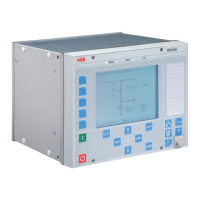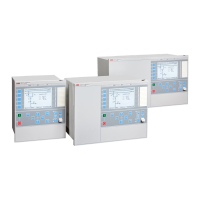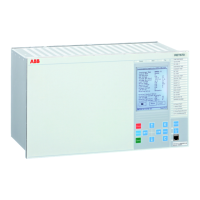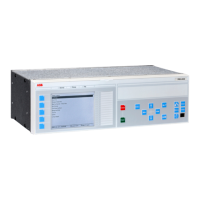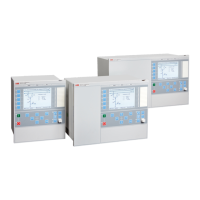calculate the value of ZN as V/(√3 · 3I
0
) Typically
, the minimum ZNPol (3 · zero
sequence source) is set. The setting is in primary ohms.
When the dual polarizing method is used, it is important that the setting Pickupx or the
product 3I
0
· ZNpol is not greater than 3V
0
. If so, there is a risk for incorrect operation
for faults in the reverse direction.
IPolMin: is the minimum ground-fault current accepted for directional evaluation. For
smaller currents than this value, the operation will be blocked. A typical setting is
5-10% of IB.
VPolMin: Minimum polarization (reference) polarizing voltage for the directional
function, given in % of VBase/√3.
IDirPU: Operate residual current release level in % of IB for directional comparison
scheme. The setting is given in % of IB and must be set below the lowest INx> setting,
set for the directional measurement. The output signals, PUFW and PUREV can be
used in a teleprotection scheme. The appropriate signal should be configured to the
communication scheme block.
9.4.3.2 2nd harmonic restrain
M15282-90 v6
If a power transformer is energized there is a risk that the current transformer core will
saturate during part of the period, resulting in a transformer inrush current. This will
give a declining residual current in the network, as the inrush current is deviating
between the phases. There is a risk that the residual overcurrent function will give an
unwanted trip. The inrush current has a relatively large ratio of 2nd harmonic
component. This component can be used to create a restrain signal to prevent this
unwanted function.
At current transformer saturation a false residual current can be measured by the
protection. Here the 2
nd
harmonic restrain can prevent unwanted operation as well.
2ndHarmStab: The rate of 2nd harmonic current content for activation of the 2nd
harmonic restrain signal. The setting is given in % of the fundamental frequency
residual current.
9.4.3.3 Parallel transformer inrush current logic
M15282-97 v6
In case of parallel transformers there is a risk of sympathetic inrush current. If one of
the transformers is in operation, and the parallel transformer is switched in, the
asymmetric inrush current of the switched-in transformer will cause partial saturation
of the transformer already in service. This is called transferred saturation. The 2
nd
harmonic of the inrush currents of the two transformers will be in phase opposition.
The summation of the two currents will thus give a small 2
nd
harmonic current. The
1MRK 504 163-UUS A Section 9
Current protection
Transformer protection RET670 2.2 ANSI 539
Application manual
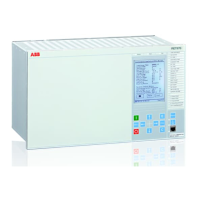
